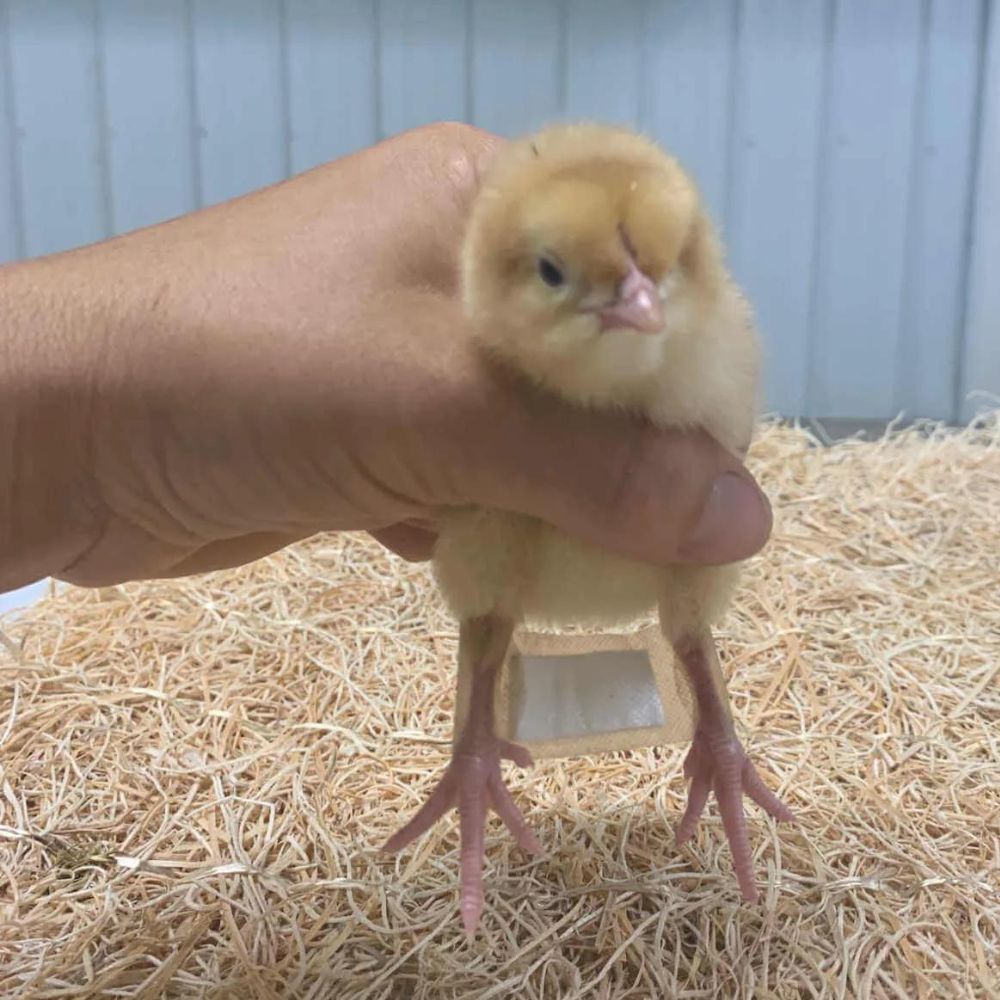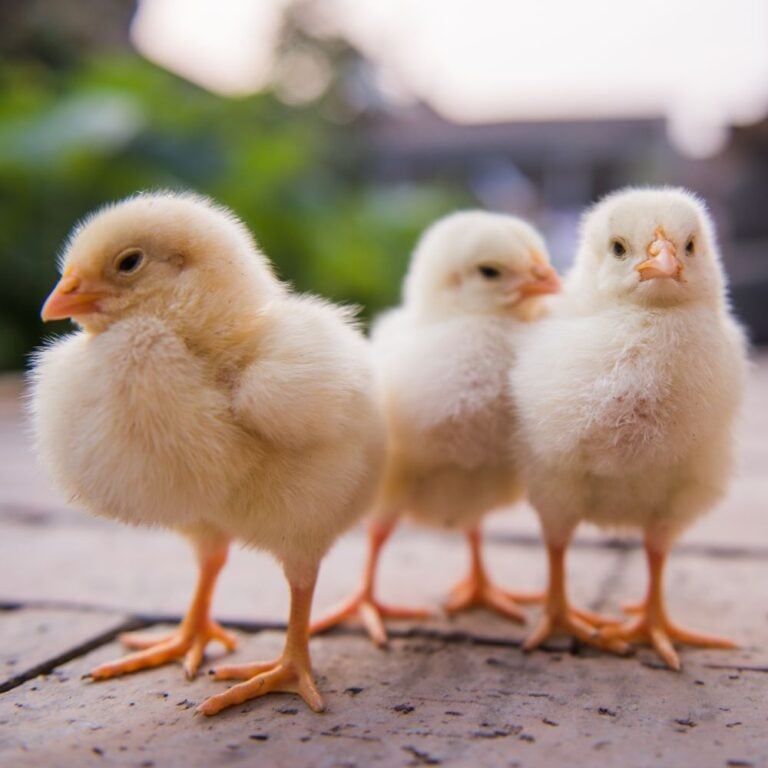We’re going to delve into another topic related to the raising of baby chicks: Spraddle Leg. It’s a condition more common than you might think. Yet, some people who raise chicks don’t know what it is or what to do to correct it.
If you don’t know what I’m talking about, keep reading! Or if you’ve seen this in your chicks, or you’re considering purchasing some, here’s a breakdown of the condition and its symptoms.
Main Takeaways:
- Essentially, spraddle leg is when your newborn chick is doing the splits.
- Spraddle leg is sometimes a congenital defect (they’re born that way).
- It can also happen if chicks are raised on plastic or slippery surfaces.
- This is why bedding and removing chicks from an incubator quickly is important.
- You need to get the chick’s legs straight underneath it to correct Spraddle Leg.
- A Band-aid or tape will help – tape the legs together, leaving a gap so the legs can stay straight.
- Your chick will hate this and will cheep VERY loudly, but it will hate not being able to walk more.
- If left untreated, your chick might not eat and drink as much, be in distress, and is more likely to die.
- The condition is also referred to as splay or splayed legs.
Table of Contents (Quickly Jump To Information)
What is Spraddle Leg?
It’s hatch day and you are excited! But things don’t always go without a hitch. Introducing: Spraddle Leg.
Spraddle Leg is a layman’s term that describes an issue when day-old chicks legs aren’t directly underneath it. They may be splayed in different directions, so the chick is unable to walk very well.
From a previous blog you’ll recall how baby chicks automatically know how to do things once hatched. Walking is one of these items. Chicks are more independent than us mammals. Thus, they don’t need to wait several days, months, or years to start walking. Basically, it’s intuition to them.
We’ve had more than one chick born with this condition at our farm. Recently, one of them self-corrected its walk within a day. Others need assistance with early intervention. If they don’t, then they’re likely unable to find water and food on their own.
Spraddle Leg Causes
Spraddle leg is sometimes a congenital defect (they’re born that way). But another common cause of Spraddle Leg is how they are raised. This is an area where you can practice prevention.
For instance, bedding them on plastic or newspaper on the brooder floor may cause their legs to splay. Due to the slick surfaces, the chicks aren’t able to get a grip to walk correctly. In turn, they adjust their gait to move around. This is the reason the right bedding is so important when raising chicks. Compare it to the way babies start to move.
If they reach a slippery surface, they can’t create the necessary friction to motor on. The same thing for chicks – they need a firm surface to gain traction.
The solution is to use something like sawdust, pine shavings, or straw in the bedding to minimize the development of Spraddle Leg. I’ve even heard of some people using rubber shelf liner (although that would not really be disposable and a nightmare to clean). Not only should this be done when they get out of the incubator, but in it as well. They can start spraddling unless a paper towel or other gripping surface is placed underneath their feet. Some incubators already have a surface that prevents this.
The key is that they need to be able to get a good grip.
How To Fix Spraddle Leg
Granted, not all chicks develop Spraddle Leg. We’ve hatched thousands of chicks on the farm, and we probably had less than a dozen with the condition. Nevertheless, if you encounter a chick with Spraddle Leg there is a way to fix it.
Bandaids aren’t just for little cuts, they can be used for many other things – like splay leg. Take a bandaid or medical tape and wrap or bind the chick’s legs together directly underneath the chick (legs will be straight up and down at a 90-degree angle). Keep it on their legs for as long as needed.
Some chicken keepers use rubber bands (or a hair tie) around the chicken’s legs as a sort of brace to create stability. They can be successful too, it’s just a bit harder to get them in the correct position and adjusted just right.
By stabilizing the legs, you are enabling the bones, leg muscles, and tendons to gain strength and memory for the correct position. While it does tend to correct itself within 24 to 48 hours, you may need to bind the legs a few times for the correction to take.
Again, this depends on the chick. As we mentioned, one of ours self-corrected within a day. Others have taken a week to set themselves right.

Don’t Give In To The Chirping
While its legs are bound, the chick is going to cry like you are killing it. You’re going to feel terrible when it does. However, you need to push through. If not, the chick will have splayed legs with the inability to walk. If they can’t walk, they will likely die.
This is because they have an inherent “flight” instinct that encourages them to run away from danger. It distresses them when their legs are immobile.
While you can try and reassure them, all you need to do is be patient until you think the time is right to remove the bindings.
Seek Professional Help
Should you feel uncomfortable in diagnosing Spraddle Leg or adjusting bandages on a wriggling baby chick, then seek out a veterinarian to assist. They will attach the band-aid or medical tape.
However, there’s every chance the chick will remove the bindings after a short period of time. If this is the situation, then work as quickly as possible to get the bindings back on. Either on your own or through a vet.
Keep Your Head With Spraddle Leg
Hatching chickens can be a ton of fun, but there’s always a possibility that something might not go as planned. Remember, Spraddle Leg is not a long-lasting condition. Treated quickly, it can be resolved in 48 hours. Either by binding the chick’s legs or through self-correction by the chick itself.
If you decide to bind their legs, keep calm. You are not hurting the chick. Rather, you’re helping to restore its built-in protection and ability to feed itself.
Maat van Uitert is a backyard chicken and sustainable living expert. She is also the author of Chickens: Naturally Raising A Sustainable Flock, which was a best seller in it’s Amazon category. Maat has been featured on NBC, CBS, AOL Finance, Community Chickens, the Huffington Post, Chickens magazine, Backyard Poultry, and Countryside Magazine. She lives on her farm in Southeast Missouri with her husband, two children, and about a million chickens and ducks. You can follow Maat on Facebook here and Instagram here.






